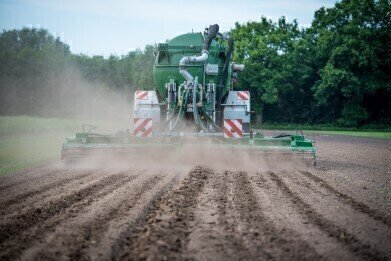Environmental Laboratory
What Are Smart Fertilisers?
Jul 21 2019
Given that the world’s population is predicted to swell by more than a third by 2050, it’s expected that food production must increase by as much as 70% to meet the growing demand. Obviously, one effective way to boost crop yields is through the application of fertilisers, which can stimulate plant growth. Unfortunately, current fertiliser use is often inefficient and environmentally-unfriendly.
This is because the vast majority of nutrients contained in fertilisers do not actually end up helping their intended target. Instead, they either evaporate into the air and contribute to global warming, or else leach into the soil and infiltrate waterways, leading to an overstimulation of certain lifeforms in marine habitats to the detriment of others. Fortunately, there might be a solution at hand: smart fertilisers.
The downside of fertilisers
Fertilisers generally work in one of two ways. In the first, farmers spray their crops with ammonia, urea or other chemicals which, when they come into contact with water, create nitrogen, an important nutrient for plant life. In the second, they distribute granules of potash or other types of mineral among their crops to produce another nutrient phosphate, which is also created through water reaction. Given that water plays a central role in both methods, it’s unsurprising that the agriculture-water interface is critical to the environment (for many other reasons as well).
However, much of these nutrients don’t actually benefit the crop themselves. Inefficient methods of application mean that nitrogen adds to the accumulation of greenhouse gases in our atmosphere or that phosphate finds its way into lakes, rivers and coastal waters. This can trigger algal blooms, which not only block out the sunlight for the vegetation beneath them, but also consume vast amounts of oxygen after they die and their husks begin to decompose. As such, agricultural environmentalists have been searching for ways to make fertilisation more eco-friendly.
Precision smarts
One key way in which fertilisers could be made more sustainable is through their application. There are already slow-release fertilisers on the market, which contain the reactive ingredients inside impervious shells. Since water has a more difficult time reaching these ingredients, the nutrients are released at a decelerated pace, allowing the soil and the plants more time to absorb and make full use of them. However, smart fertilisers represent the next step in this process by introducing conditionality into the product.
These smart fertilisers are now equipped with monitoring equipment which can sense fluctuations in the temperature, moisture or acidity of their surroundings and make subsequent adjustments to how quickly they release their nutrients. This allows farmers to create tailored plans for each of their crops, optimising the use of their fertilisers and ensuring minimal adverse effects from their application. Combined with exciting innovations such as engineered nanotechnology and precision agriculture, these fertilisers could revolutionise the face of sustainable farming.
Digital Edition
IET 34.2 March 2024
April 2024
Gas Detection - Biogas batch fermentation system for laboratory use with automatic gas analysis in real time Water/Wastewater - Upcycling sensors for sustainable nature management - Prist...
View all digital editions
Events
Apr 30 2024 Melbourne, Australia
Apr 30 2024 Birmingham, UK
May 03 2024 Seoul, South Korea
May 05 2024 Seville, Spain
May 06 2024 Minneapolis, MN, USA


















